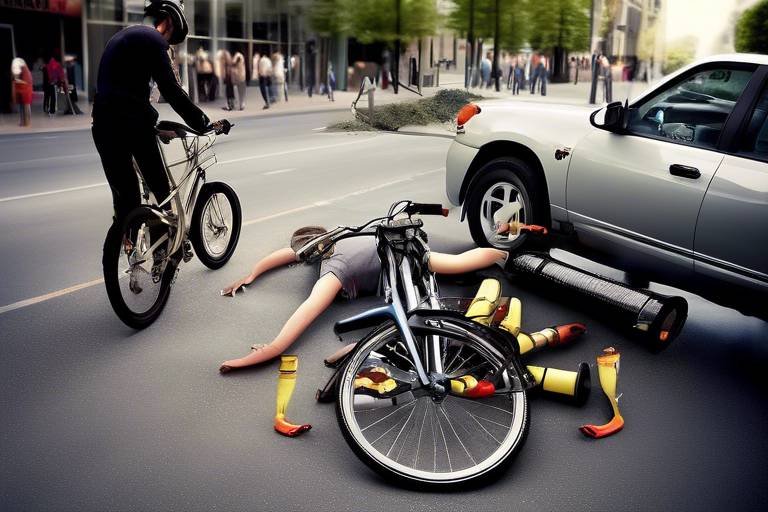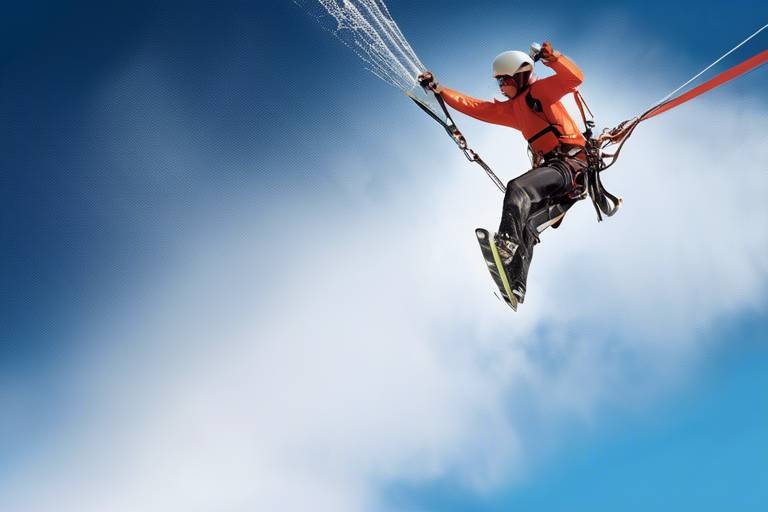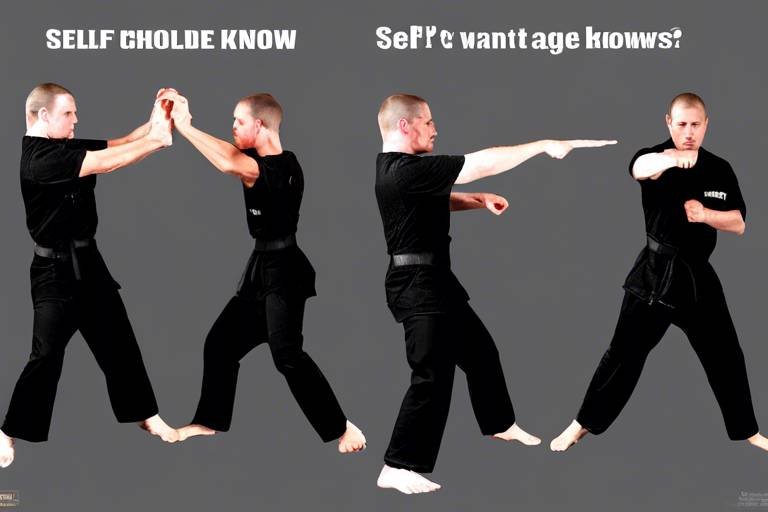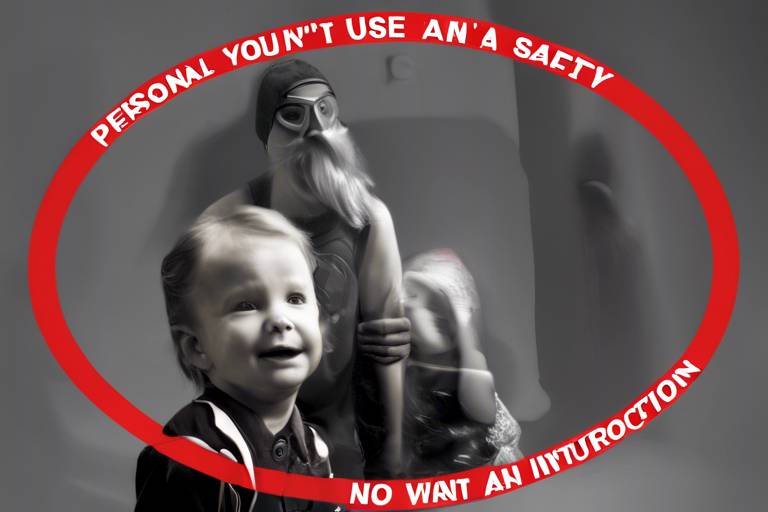How to Stay Safe While Rock Climbing?
Rock climbing is an exhilarating adventure that offers a unique mix of physical challenge and breathtaking views. However, it also comes with its own set of risks that can turn a fun day out into a dangerous situation if proper safety measures aren't in place. Whether you're a novice eager to conquer your first rock wall or a seasoned climber scaling the heights of your favorite crag, knowing how to stay safe is paramount. In this article, we’ll dive into essential safety practices, gear recommendations, and techniques that ensure a safe and enjoyable climbing experience.
Before you even think about lacing up your climbing shoes, it's crucial to identify the potential hazards that you might face while scaling those rugged cliffs. Common risks include:
- Falls: Perhaps the most obvious danger, falls can result from slips, miscalculations, or unexpected equipment failure.
- Equipment Failure: Relying on faulty gear can lead to catastrophic outcomes, so regular inspections and maintenance are essential.
- Environmental Factors: Weather changes, loose rocks, and unfamiliar terrain can all impact your safety.
Understanding these risks allows climbers to prepare adequately and make informed decisions before embarking on their climbs.
Having the right gear is not just about comfort; it’s about survival. The essential equipment every climber should invest in includes:
- Harnesses: Your lifeline while climbing.
- Helmets: Protect your head from falling debris.
- Ropes: The backbone of your climbing safety system.
- Carabiners: Essential for securing gear and ensuring safety.
When selecting gear, always prioritize quality over price. High-quality equipment can mean the difference between life and death in a climbing scenario.
A harness is a climber's lifeline, and choosing the right one is critical for safety. When selecting a harness, consider:
- Fit: It should be snug but not restrictive.
- Style: Different climbing styles require different harness types.
- Weight: Lighter harnesses are often more comfortable during long climbs.
There are various harness types, each suited for different climbing activities:
| Harness Type | Advantages | Disadvantages |
|---|---|---|
| Sport Harness | Lightweight, great for gym and sport climbing | Less comfortable for long hangs |
| Trad Harness | More gear loops, better for multi-pitch climbs | Heavier than sport harnesses |
| Alpine Harness | Compact, designed for quick transitions | Less padding, can be uncomfortable |
Choosing the right harness can enhance your climbing experience by providing comfort and security tailored to your style.
A well-fitted harness is crucial for safety. To properly fit a harness, follow these steps:
- Put on the harness and adjust the waist belt so it sits above your hips.
- Thread the leg loops through your legs, ensuring they sit snugly but comfortably.
- Check that all buckles are secure and that you can fit two fingers between the harness and your body.
Taking the time to ensure a proper fit can significantly enhance your safety while climbing.
Climbing helmets are essential for protecting against head injuries. When choosing a helmet, look for features such as:
- Lightweight materials: For comfort during long climbs.
- Adjustable straps: To ensure a snug fit.
- Ventilation: To keep your head cool during strenuous activity.
Wearing a helmet can be a game-changer in preventing injuries from falls or falling debris, making it a non-negotiable part of your climbing gear.
Proper climbing techniques can significantly reduce the risk of accidents. Understanding how to position your body, manage your weight, and maintain balance is crucial for a safe climb. Techniques such as keeping three points of contact on the wall at all times can enhance stability.
Understanding how to belay correctly is fundamental for climber safety. The belaying process involves:
- Securing the rope to your harness.
- Managing slack as your partner climbs.
- Using communication signals to ensure clarity between climber and belayer.
Effective belaying can prevent falls and keep both climbers safe during their ascent.
Learning how to fall safely can prevent serious injuries. Techniques include:
- Body Positioning: Tuck your chin and roll upon landing.
- Using Dynamic Movements: Allow your body to absorb the impact.
By mastering these techniques, climbers can minimize injury risk during falls, making for a safer climbing experience.
Q: What should I do if I fall while climbing?
A: Try to stay calm, protect your head, and roll into the fall if possible. Your belayer should be prepared to catch you safely.
Q: How often should I inspect my climbing gear?
A: Inspect your gear before every climb and replace any worn or damaged equipment immediately.
Q: Is it necessary to wear a helmet while climbing indoors?
A: While it may not be mandatory, wearing a helmet indoors is a good practice, as accidents can happen anywhere.

Understanding Rock Climbing Risks
Rock climbing is an exhilarating adventure that offers a unique blend of physical challenge and mental fortitude. However, it’s essential to recognize that this thrilling sport comes with its own set of risks. Understanding these risks is the first step towards ensuring a safe climbing experience. From the moment you lace up your climbing shoes to the time you reach the summit, there are potential hazards lurking that every climber should be aware of.
One of the most significant risks in rock climbing is the possibility of falls. Whether you're bouldering or scaling a multi-pitch route, a fall can occur at any moment. According to climbing statistics, falls account for a large percentage of climbing accidents, often resulting in serious injuries. This highlights the importance of proper safety measures, such as using a reliable harness and ensuring that your belayer is attentive and skilled.
Another major concern is equipment failure. Imagine trusting your life to a carabiner or rope that has seen better days. It’s crucial to regularly inspect your gear for any signs of wear and tear. A frayed rope or a cracked helmet can mean the difference between safety and disaster. Always invest in high-quality equipment and replace any gear that shows signs of damage. Remember, your safety is only as strong as your weakest link!
Environmental factors also play a significant role in climbing safety. Weather conditions can change rapidly, especially in mountainous areas. Rain, snow, or high winds can create hazardous situations, making rocks slippery and increasing the risk of falls. Additionally, be aware of your surroundings—loose rocks, wildlife, and other climbers can pose unexpected threats. Always check the weather forecast before heading out and be prepared to adjust your plans accordingly.
To help you better understand these risks, here’s a quick overview of the most common hazards:
- Falls: Can happen due to improper technique or equipment failure.
- Equipment Failure: Regularly inspect gear to prevent accidents.
- Environmental Hazards: Be mindful of changing weather and loose rocks.
By being aware of these risks and taking proactive measures to mitigate them, climbers can enjoy the thrill of the ascent without compromising their safety. Remember, knowledge is power in the climbing world. Equip yourself with the right information, and you’ll be well on your way to a safe and enjoyable climbing experience!

Essential Climbing Gear
When it comes to rock climbing, having the right gear is not just a matter of comfort; it’s a matter of life and death. The equipment you choose can significantly impact your safety and performance. So, what should you pack in your climbing kit? Let’s break it down into essential gear that every climber, whether a newbie or a seasoned pro, should consider. First and foremost, you absolutely need a harness. This is your primary connection to the rope and, ultimately, your lifeline. A good harness ensures that you’re securely attached to the climbing rope, allowing you to focus on the climb ahead.
Next up is the helmet. You might think, “I’m just climbing a few rocks; do I really need a helmet?” Absolutely! Helmets protect you from falling debris and the potential for head injuries in the event of a fall. It’s like wearing a seatbelt in a car; you hope you never need it, but you’ll be thankful you have it if something goes wrong.
Now, let’s talk about ropes. Climbing ropes come in various types, and choosing the right one depends on your climbing style—whether it’s sport, trad, or bouldering. The two main types are dynamic ropes, which stretch to absorb the impact of a fall, and static ropes, which don’t stretch and are used for rappelling or hauling gear. When selecting a rope, look for one that meets the necessary safety standards and is appropriate for your specific climbing needs.
Another essential piece of gear is carabiners. These metal clips are crucial for connecting your harness to the rope and other gear. There are different types of carabiners, including locking and non-locking. Locking carabiners are generally safer for climbing because they prevent accidental openings. It’s wise to invest in a few high-quality carabiners to ensure your safety.
Lastly, you might want to consider climbing shoes. They might look like a regular pair of shoes, but climbing shoes are designed to provide maximum grip and support. The fit is incredibly important—too tight, and you’ll be uncomfortable; too loose, and you won’t have the control you need. A good pair of climbing shoes can make a world of difference in your climbing performance.
| Climbing Gear | Purpose | Key Features |
|---|---|---|
| Harness | Connects climber to the rope | Comfortable fit, adjustable straps |
| Helmet | Protects head from impacts | Lightweight, adjustable, durable |
| Ropes | Secures climber during ascent | Dynamic (stretchy) and static (non-stretch) |
| Carabiners | Connects harness to gear | Locking and non-locking options |
| Climbing Shoes | Provides grip and support | Snug fit, rubber soles |
In summary, equipping yourself with the right climbing gear is essential for a safe and enjoyable climbing experience. Each piece of equipment plays a significant role in your overall safety, so don’t skimp on quality. It’s better to invest in reliable gear that will last than to risk your safety with cheaper options. Remember, the mountains can be unpredictable, but with the right gear, you can face them head-on!
- What is the most important gear for beginners? While all gear is essential, a harness and helmet are the most critical for beginners. They provide the necessary safety while you learn the ropes.
- How often should I replace my climbing gear? It’s recommended to inspect your gear regularly for wear and tear. Generally, ropes should be replaced every 3-5 years, and harnesses should be replaced if they show any signs of damage.
- Can I rent climbing gear instead of buying it? Yes, many climbing gyms and outdoor stores offer rental gear. This is a great option for beginners who want to try climbing before making a significant investment.

Choosing the Right Harness
When it comes to rock climbing, your harness is more than just a piece of gear; it's your lifeline. The right harness can make the difference between a thrilling adventure and a dangerous situation. So, how do you choose the right one? First, consider your climbing style. Are you a sport climber scaling vertical walls, or do you prefer the multi-pitch routes of traditional climbing? Each style demands different features from your harness.
Next, let's talk about fit. A well-fitted harness should feel snug but not restrictive. You want to be able to move freely while still being secure. When trying on a harness, make sure to adjust the leg loops and waist belt properly. You should be able to fit two fingers between your body and the harness but not much more. If the harness is too loose, it can shift during a fall, which is the last thing you want!
Additionally, consider the weight of the harness. If you're planning on long climbs, a lightweight harness can make a significant difference in your comfort level. However, don't sacrifice safety for weight. Look for harnesses made from durable materials that can withstand the rigors of climbing. A good rule of thumb is to check the UIAA (International Climbing and Mountaineering Federation) certification, which ensures that your harness meets safety standards.
Here's a quick breakdown of the key features to look for when choosing a harness:
| Feature | Description |
|---|---|
| Padding | Look for harnesses with adequate padding for comfort during long climbs. |
| Gear Loops | Multiple gear loops are essential for carrying climbing gear efficiently. |
| Adjustability | Choose a harness that allows for easy adjustments to fit your body type. |
| Weight | Consider a lightweight option for comfort on extended climbs. |
Finally, don't forget to try on different brands. Each manufacturer has its own sizing, so what fits perfectly in one brand might not in another. Spend some time hanging in the harness at the store or even better, do a test climb if possible. This way, you can ensure that your choice will keep you safe and comfortable as you conquer those heights.
Q: How often should I replace my climbing harness?
A: It’s recommended to replace your harness every 5 years, or sooner if you notice any signs of wear, such as fraying or damage.
Q: Can I use a harness for different types of climbing?
A: Yes, many harnesses are versatile enough for various climbing styles, but it's best to choose one designed for your primary activity.
Q: What should I do if my harness feels uncomfortable?
A: If your harness is uncomfortable, check the fit and adjust it. If it still feels off, consider trying a different model or brand.

Types of Climbing Harnesses
When it comes to rock climbing, choosing the right harness is like picking the perfect pair of shoes for a marathon. It can make all the difference between a comfortable climb and a painful experience. There are several types of climbing harnesses, each designed for specific activities and needs. Understanding these types will help you select the best one for your climbing adventures.
The most common types of climbing harnesses include:
- Sport Harnesses: These are designed for sport climbing, where quick and easy adjustments are essential. They typically feature a lightweight design and a comfortable fit, allowing for maximum mobility. Sport harnesses usually have fewer gear loops, which is adequate for the limited gear used in sport climbing.
- Traditional (Trad) Harnesses: If you’re venturing into trad climbing, you’ll want a harness that can accommodate more gear. These harnesses come with multiple gear loops and are often made from more durable materials to withstand the rigors of placing gear on the route. They provide a balance of comfort and functionality, making them ideal for longer climbs.
- Alpine Harnesses: For those who love the thrill of alpine climbing, a lightweight and packable harness is essential. Alpine harnesses are designed for quick on-and-off use, often featuring a minimalist design that allows for easy layering of clothing. They are generally less padded, which makes them lighter but can compromise comfort during prolonged use.
- Kids’ Harnesses: Safety is paramount when it comes to young climbers. Kids’ harnesses are specifically designed to fit smaller bodies and ensure a secure fit. They often come in fun colors and designs, making climbing appealing to children while providing the necessary safety features.
Each type of harness has its advantages and disadvantages. For instance, while sport harnesses are lightweight and easy to use, they may lack the durability needed for multi-pitch climbs. On the other hand, trad harnesses, while robust, can be bulkier and heavier. The key is to assess your climbing style and choose a harness that aligns with your specific needs.
In addition to the type of harness, consider factors like adjustability, weight, and comfort. A well-fitted harness should feel snug but not restrictive. It’s essential to try on different models and adjust them properly before making a purchase. Remember, a harness is not just a piece of gear; it’s your lifeline when you’re scaling those breathtaking heights!
In summary, understanding the different types of climbing harnesses can significantly enhance your climbing experience. Whether you’re a weekend warrior at the local crag or an ambitious alpinist, selecting the right harness tailored to your climbing style is crucial for both safety and enjoyment.

Proper Harness Fitting
When it comes to rock climbing, the importance of a properly fitted harness cannot be overstated. A well-fitted harness serves as your lifeline, ensuring not just safety but also comfort during your climbs. Imagine being suspended hundreds of feet in the air, and your harness is either too loose or too tight—this scenario can lead to serious safety risks or discomfort that distracts you from the climb ahead. So, how do you ensure your harness fits just right? Let's break it down step by step.
First, start by selecting the right size harness based on your waist and leg measurements. Most harnesses come with a sizing chart that includes measurements in both inches and centimeters. To get an accurate fit, measure your waist at the level where the harness will sit, typically just above your hip bones. Then, measure your thighs at the widest point. It’s essential to refer to the manufacturer’s sizing chart to find a model that accommodates your measurements.
Once you have the correct size, it’s time to put the harness on. Step into the leg loops and pull the harness up so that the waist belt sits snugly around your waist. You should feel the harness resting comfortably, but not so tight that it restricts your breathing or movement. The waist belt should sit above your hip bones, not on them, to ensure maximum support. If you can fit more than two fingers between the harness and your skin, it’s likely too loose.
Next, adjust the leg loops. They should also be snug but not overly tight. You can check the fit by performing a simple test: try to slide your hand under the leg loops. If you can easily fit your hand without excessive force, the loops may need tightening. However, if you struggle to get your hand through, it’s a sign that the leg loops are too tight, which can cause discomfort during climbs.
To ensure everything is secure, take a moment to double-check all buckles and adjustments. Many harnesses come with a color-coded system for ease of use, which can be incredibly helpful for beginners. Make sure that all buckles are properly threaded and locked. A quick visual inspection can save you from potential hazards mid-climb.
Finally, it’s a good idea to practice wearing your harness before hitting the rock face. Spend some time hanging from it in a safe environment, like a climbing gym or a controlled outdoor setting. This will help you get used to the feel of the harness and allow you to make any final adjustments if something doesn’t feel right. Remember, a well-fitted harness is not just a matter of safety; it's about enhancing your overall climbing experience.
In summary, proper harness fitting is a critical aspect of rock climbing safety. By following these steps, you can ensure that your harness fits securely and comfortably, allowing you to focus on the adventure ahead without unnecessary distractions. Always remember that your harness is your first line of defense against falls, so take the time to fit it correctly!
- How often should I check my harness for fit? It’s wise to check your harness fit each time you put it on, especially if you’re climbing in different conditions or wearing different clothing.
- Can I use the same harness for different types of climbing? While some harnesses are versatile, it’s best to choose one designed specifically for the type of climbing you’ll be doing for optimal safety and comfort.
- What should I do if my harness feels uncomfortable? If your harness feels uncomfortable at any point, take a break and readjust it. If discomfort persists, consider trying a different model or size.

Importance of Climbing Helmets
When it comes to rock climbing, safety should always be at the forefront of your mind, and one of the most essential pieces of gear that can protect you is a climbing helmet. You might think, "Do I really need a helmet? I'm careful!" But here's the reality: accidents can happen in the blink of an eye. Whether it’s a loose rock falling from above or a sudden slip, a helmet can be a lifesaver. It’s not just about being cautious; it’s about being prepared for the unexpected.
Climbing helmets are designed to absorb impacts and protect your head from injuries that could result from falls or falling debris. The importance of wearing a helmet cannot be overstated, especially in environments where rockfall is a concern. Imagine climbing a beautiful crag, enjoying the view, and suddenly, a rock dislodges from above. Without a helmet, that small piece of rock could lead to serious injury or worse. In fact, studies show that wearing a helmet can reduce the risk of head injuries by up to 85%!
When selecting a climbing helmet, there are several features you should consider:
- Weight: A lightweight helmet is crucial for comfort, especially during long climbs.
- Fit: A well-fitting helmet should sit snugly on your head without being too tight. It should also have adjustable straps to ensure it stays in place.
- Ventilation: Good ventilation helps keep you cool during strenuous climbs, so look for helmets with adequate airflow.
- Durability: Helmets made from tough materials can withstand impacts better and last longer.
There are different types of climbing helmets, each designed for specific climbing styles. For instance, full-shell helmets provide maximum protection and are ideal for traditional climbing, while half-shell helmets are lighter and more suited for sport climbing. Knowing the right type for your climbing style can significantly enhance your safety.
Moreover, wearing a helmet is not just about protecting yourself; it also sets a good example for fellow climbers. When you’re out there on the rock face, remember that safety is a shared responsibility. By wearing a helmet, you encourage others to do the same, fostering a culture of safety within the climbing community.
In summary, the importance of climbing helmets cannot be overlooked. They provide essential protection against head injuries, promote a safety-first mindset, and can ultimately make your climbing experience more enjoyable by allowing you to focus on the climb rather than worrying about potential hazards. So, the next time you gear up for a climb, make sure your helmet is securely fastened—you'll be glad you did!

Climbing Techniques for Safety
When it comes to rock climbing, mastering the right techniques can mean the difference between a thrilling adventure and a dangerous situation. Safety should always be your top priority, and understanding essential climbing techniques can significantly reduce the risk of accidents. Picture this: you're scaling a vertical wall, the adrenaline pumping through your veins, and every move feels like a dance between gravity and skill. However, without the proper techniques, that exhilarating climb can quickly turn into a precarious predicament. So, let’s dive into some vital climbing techniques that can help keep you safe while you conquer those heights!
First and foremost, one of the most critical aspects of climbing safety is mastering belaying basics. Belaying is the process of managing the rope for a climber, and it requires a solid understanding of both technique and communication. Imagine you’re the climber and your partner is your lifeline—if they don’t know how to belay properly, you could be in for a world of trouble. The belayer must pay attention at all times, ensuring they’re ready to catch a fall. This means using a belay device correctly, maintaining a brake hand on the rope, and being aware of the climber’s movements. Communication is key; a simple shout of “On belay!” from the climber should be met with a confident “Belay on!” from the belayer, signaling that they are ready.
Next, let’s talk about fall safety techniques. Falling is an inevitable part of climbing, but knowing how to fall safely can significantly minimize the risk of injury. Think of it like a controlled tumble rather than a free fall into the abyss. When you sense that you’re about to fall, try to keep your body relaxed and fall in a way that distributes the impact. Here are a few things to keep in mind:
- Body Positioning: Try to fall away from the wall and keep your legs slightly bent to absorb the impact.
- Dynamic Movements: If you’re falling, allow your body to move with the fall instead of fighting against it. This can help reduce the shock.
- Landing Technique: Aim to land on your feet if possible, rolling onto your side to dissipate the force of the fall.
Another important technique to keep in mind is maintaining three points of contact at all times. This means that at least three of your limbs should be in contact with the rock face or holds while climbing. This technique enhances your stability and reduces the risk of slipping. Visualize a triangle; it’s a stable shape that can support weight effectively. By keeping three points of contact, you create a solid base that allows you to reach for the next hold with confidence.
Lastly, always remember to stay aware of your surroundings. Climbing is not just about your own movements; it’s also about being mindful of potential hazards. Look out for loose rocks, changing weather conditions, and your climbing partner's position. The environment can change rapidly, and being alert can help you avoid unexpected dangers. Just like a driver keeps their eyes on the road, a climber should keep their eyes on the rock face and their climbing partner.
In summary, by mastering these climbing techniques, you can significantly enhance your safety while enjoying the thrill of rock climbing. Remember, climbing should be a fun and rewarding experience, so take the time to practice these skills, communicate effectively with your partner, and always prioritize safety. Happy climbing!
Q: What should I do if I fall while climbing?
A: Try to stay relaxed, position your body to minimize impact, and roll if necessary. Communicate with your belayer to ensure they are prepared for your fall.
Q: How can I improve my belaying skills?
A: Practice regularly with a partner, focus on effective communication, and familiarize yourself with different belay devices to understand their mechanics.
Q: What is the best way to choose a climbing partner?
A: Look for someone who shares similar skill levels and climbing goals, values safety as much as you do, and is willing to communicate openly about techniques and concerns.

Belaying Basics
When it comes to rock climbing, understanding the fundamentals of belaying is absolutely essential for both your safety and that of your climbing partner. Think of belaying as the lifeline in a climber's journey; it’s the process by which one climber (the belayer) manages the rope for another climber (the climber). This interaction is crucial, as it can mean the difference between a smooth ascent and a potentially dangerous fall. So, how do you master this vital skill? Let's break it down.
First and foremost, it's important to have a solid grasp of the belaying process. The belayer must remain attentive and ready to respond to the climber's movements. This means keeping the rope taut when the climber ascends and allowing slack when they need to maneuver or rest. A good belayer is like a trusted partner in a dance—always in sync, always aware of the other's needs.
Communication is key in this partnership. Establishing clear signals between the climber and belayer can prevent misunderstandings that might lead to accidents. For instance, a climber might shout "On belay!" to indicate they are ready to climb, while the belayer should respond with "Climb on!" to confirm they are ready and prepared. These simple phrases can create a sense of security and assurance, making the climbing experience much more enjoyable.
Now, let’s talk about the techniques involved in belaying. There are several methods, but one of the most common is the tube device method. This involves using a belay device, typically a tube or plate, which helps manage the rope effectively. Here’s a quick overview of the steps:
- Thread the rope through the belay device according to the manufacturer's instructions.
- Attach the device to your harness with a locking carabiner.
- Hold the brake side of the rope firmly to maintain tension.
- Pay attention to your climber's movements and adjust the rope accordingly.
It’s also vital to practice the lock-off technique. This is where you take the brake hand and pull down on the rope to create a secure hold, especially when your climber is resting or in a precarious position. This technique is like a safety net, ensuring that the climber is secure even when they're not actively climbing.
Finally, it’s crucial to remember that belaying is not just about managing the rope; it’s about being an active participant in your climbing partner’s safety. Always stay alert and focused, and never let distractions pull your attention away from the task at hand. Just like a pilot must keep their eyes on the sky, a belayer must keep their eyes on the climber.
- What is the primary role of a belayer?
The belayer's primary role is to manage the rope for the climber, ensuring their safety during ascents and descents. - How do I communicate effectively while climbing?
Establish clear verbal signals with your climbing partner, such as "On belay!" and "Climb on!" to ensure both parties are aware of the climbing status. - What equipment do I need for belaying?
You will need a belay device, a locking carabiner, and a harness. Always ensure your gear is in good condition. - Can I belay without experience?
No, it's essential to have proper training and practice before belaying someone, as it involves significant responsibility for their safety.

Fall Safety Techniques
When it comes to rock climbing, the possibility of a fall can be daunting. However, understanding and mastering can turn a potentially dangerous situation into a manageable one. Imagine you’re climbing a steep cliff, the sun is shining, and the adrenaline is pumping. Suddenly, you lose your footing. What happens next can make all the difference between a minor scare and a serious injury. So, let’s delve into some essential techniques to keep you safe during those unexpected tumbles.
First and foremost, one of the most crucial aspects of fall safety is body positioning. When you feel yourself falling, try to keep your body relaxed and your limbs slightly bent. This position allows your body to absorb the impact more effectively, reducing the risk of injury. Think of it like a cat landing on its feet; they instinctively adjust their bodies to cushion the fall. Similarly, by adopting a relaxed posture, you can minimize the shock of hitting the ground or the climbing surface.
Another important technique involves using dynamic movements. This means learning to fall in a way that utilizes your gear and the natural dynamics of climbing. When you fall, your harness and rope work together to catch you, but the way you position your body can enhance this process. For instance, if you’re climbing with a partner, communicate clearly about when you might fall. This allows your belayer to prepare for the impact, ensuring a smoother catch. Remember, a well-coordinated team can make all the difference.
Additionally, it’s vital to practice controlled falls in a safe environment. Many climbing gyms offer facilities where you can learn how to fall correctly. By practicing, you’ll develop a sense of confidence and control that becomes second nature when you’re out on the rock face. This practice can include techniques like backward falls, where you allow yourself to fall backward into the harness, and forward falls, which require a different approach. The more familiar you become with these techniques, the less frightening falling will feel.
Moreover, understanding the mechanics of your gear is essential. Knowing how your harness, rope, and belay device work together can help you trust your equipment during a fall. For instance, when you fall, the rope stretches, which can create a dynamic force that needs to be managed. Familiarize yourself with the limits and capabilities of your gear to ensure you’re prepared for any situation. This knowledge can significantly boost your confidence and enhance your overall safety.
Lastly, always remember the importance of team communication. Before you start your climb, establish clear signals and expectations with your climbing partner. Discuss what to do in case of a fall, and ensure that both of you are on the same page. This proactive approach can help you react quickly and effectively if an accident occurs. Just like a well-rehearsed dance, a synchronized climbing team can navigate challenges more smoothly.
In conclusion, mastering fall safety techniques is essential for every climber, whether you're a newbie or a seasoned pro. By focusing on body positioning, practicing controlled falls, understanding your gear, and maintaining open communication with your climbing partner, you can significantly reduce the risks associated with falls. Remember, climbing is about enjoying the journey and embracing the thrill, but safety should always come first!
- What should I do if I fall while climbing?
Try to remain relaxed, keep your limbs slightly bent, and trust your gear to catch you.
- How can I practice fall safety techniques?
Attend climbing classes at gyms that offer safe environments for practicing falls and techniques.
- Is it necessary to communicate with my belayer before climbing?
Yes, clear communication establishes expectations and prepares both climbers for falls.
Frequently Asked Questions
- What are the main risks associated with rock climbing?
Rock climbing comes with several risks, including falls, equipment failure, and environmental hazards like loose rocks or sudden weather changes. Understanding these risks is essential for climbers to prepare adequately and mitigate potential dangers.
- What essential gear do I need for rock climbing?
To ensure safety while rock climbing, you need several key pieces of gear, including a harness, helmet, climbing shoes, ropes, and carabiners. Each item plays a crucial role in keeping you secure and comfortable during your climbs.
- How do I choose the right climbing harness?
Choosing the right climbing harness involves considering the fit, style, and safety ratings. Make sure to try on different harnesses to find one that fits snugly but comfortably, and check that it meets the safety standards for your specific climbing activities.
- What types of climbing harnesses are available?
There are several types of climbing harnesses designed for different activities, such as sport, trad, and alpine climbing. Each type has its own advantages and disadvantages, so it's important to choose one that aligns with your climbing style and needs.
- How should I properly fit my climbing harness?
To properly fit your climbing harness, start by loosening all the straps and stepping into the harness. Pull it up to your waist, tighten the waist belt, and then adjust the leg loops. Ensure there are no twists and that you can fit two fingers comfortably under the straps.
- Why is wearing a climbing helmet important?
A climbing helmet is crucial for protecting your head from falling rocks or bumps against the rock face. When selecting a helmet, look for features like a snug fit, lightweight design, and ventilation for comfort during climbs.
- What are the basic techniques for safe climbing?
Safe climbing techniques include proper foot placement, maintaining three points of contact, and using your legs to push up rather than pulling with your arms. These techniques enhance stability and reduce the risk of falling.
- How do I belay safely?
Belaying safely involves understanding the belaying process, which includes using the appropriate belay device and maintaining communication with your climbing partner. Always keep your brake hand on the rope and be attentive to your climber's movements.
- What should I do if I fall while climbing?
If you fall while climbing, try to relax your body and position yourself to absorb the impact. Keep your arms and legs slightly bent, and aim to fall away from the rock face. Practicing falling techniques can help minimize the risk of injury.



















